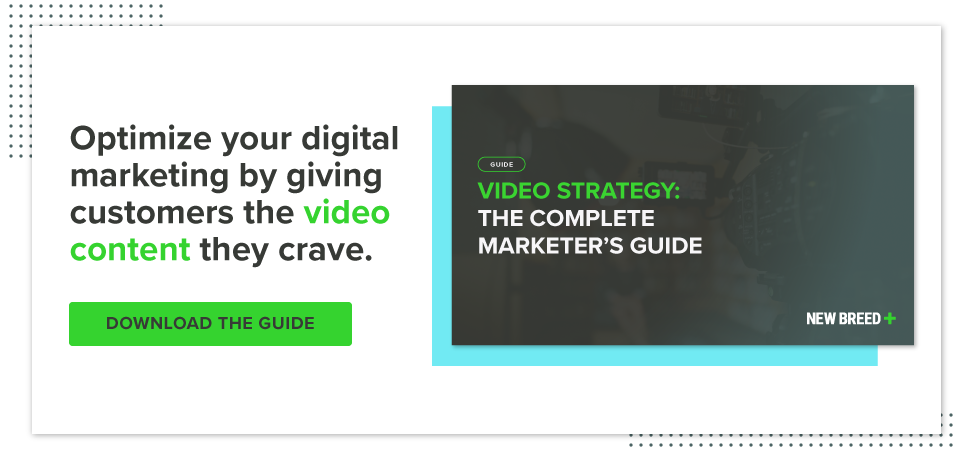8 SEO Areas You Should Focus on To Boost Your Videos’ Visibility

After spending a fair amount of time weighing in and analyzing different options, you came up with the perfect idea to develop the coolest and most amazing video for your brand.
Accordingly, you also put together a great marketing strategy that fits your business goals and even found a skilled video company to produce a gorgeous, customized and engaging piece. And yet, your video isn’t ranking and getting the attention it deserves. What’s going on?
You probably forgot to implement video-specific SEO strategies.
Even though applying the basics of search engine optimization certainly helps, for video content to stand out and perform, you need to focus on certain SEO areas. In this article, we'll cover eight underrated SEO areas that will enhance your videos' visibility and reach — helping you to improve their ranking in SERPs radically.
1. Choosing the Right Hosting Platform
If you were to ask anyone where to upload your videos, YouTube seems like the obvious answer, right? It’s a platform fully optimized for sharing and watching video content, and it’s the second biggest search engine.
Even more so, if you upload your videos on YouTube, they can also be ranked on Google search results. Mainly because of the popular search engine, some questions are better answered with this type of content. And we totally agree!
So, evidently, YouTube is a no brainer when it comes to optimizing your video’s performance.
However, it’s not the only choice you have. Platforms like Vimeo, Wistia and DailyMotion are also worth checking out. This is why, before making hasty decisions, it’s important to ask yourself what you want to achieve with your videos.
For example, if your goal is to generate brand awareness, YouTube is definitely the go-to option. Vimeo certainly has less traffic than YouTube, but it speaks to a different segment of the audience — which might fit perfectly with some companies’ niche.
Wistia, on the other hand, is a business-oriented hosting platform with automatic SEO. It also has useful analytics dashboards with video performance insights, like heatmaps and play rates. Hence, it’s ideal for driving more traffic to your website and understanding how people are reacting to your on-site content.
All in all, we recommend analyzing your business’ specific needs and goals and choosing the platform (or platforms) that can effectively help you achieve them.
2. The Importance of Optimized Titles and Descriptions
Just like for blog posts and articles, titles and video descriptions play a very big role in ranking improvement.
These days, people search online by using target keywords, and including those terms in titles and descriptions is imperative to improve your videos’ searchability. So, conduct thorough research to make sure you’re using relevant terms for your target audience.
But video SEO more than keywords, actually. Don’t include some random terms for the sake of SEO. Like everything else in marketing, your titles should be creative, informative, clear and persuasive — craft something that can instantly pique your audience's curiosity and encourage them to click your video.
And the same goes for descriptions. You might feel the need to write long and detailed texts with all the great keywords you found, but that’s not recommended. Sure, you should include one or two target terms, but try to keep your descriptions light, short, interesting and straightforward.
For example, if you are hosting on platforms like YouTube or Vimeo, a simple but effective strategy for your descriptions is writing a brief and engaging summary of the content. You can then add relevant business information, such as contact info, social media platforms and a clear CTA to tell the audience what to do next — just like the following image!
On the other hand, when you are hosting content on your own website, you can focus more on the CTA side of things and optimize the whole page to reinforce the videos’ message.
3. Thumbnails Can Make or Break Your Video’s Performance
As decisive as it sounds, having the wrong thumbnail can negatively affect your video’s performance. Think about it, how many times while browsing on YouTube, have you dismissed videos because they had blurry, dull or irrelevant thumbnails?
Even though we shouldn’t judge a book by its cover, that’s how it actually works for video content; Thumbnails play a key factor in whether we click on the video or not. A good thumbnail makes it more likely that the users who do find your videos will click on them. The more this happens, the more engagement your videos will accumulate, and the more likely the algorithm is to serve them to even more users. So, having a good thumbnail is a big deal in terms of optimization.
Your thumbnails, therefore, should be striking enough to quickly persuade the viewer to watch your video instead of your competitor’s!
Sometimes marketers let platforms automatically choose their thumbnails, and that’s another BIG mistake. Generic and unoriginal is your digital content’s worst enemy, doubly so for marketing videos.
The golden rule here is that thumbnails should be custom-made so that they can truthfully represent your video’s topic and your brand’s style. So, whether you add emojis, your logo or text, make sure it’s customized, unique and enticing!
4. The Power of Using Transcripts
A transcript is the written version of every single word said in your video and something that you most definitely need to add to your pieces.
You see, search engines can’t track your video’s audio (yet), but a transcription allows the script to be indexed, instantly improving your piece’s discoverability and organic ranking. Even more so, your script is probably full of relevant keywords, and that will make your piece even more searchable!
Plus, creating a transcription can lead to a better user experience, mainly due to two elements: First off, people can revisit a specific part of the video or even read along while they’re watching it.
Secondly, and maybe more importantly, a transcript is going to make your piece accessible to more viewers. With mobile being such a big part of content-consumption nowadays, transcripts and captions help viewers with hearing problems or who are watching from a sound-prohibited environment engage with your content.
Moreover, you also need to consider that many countries now require a written version of video content to comply with accessibility laws. So, neglecting to upload one immediately limits the potential scope and reach of your piece.
5. Dedicated Pages for Your Video
So, we’ve already talked about how you can optimize your videos for hosting platforms, like YouTube or Vimeo. But there’s another great strategy you can implement to improve their visibility: creating landing pages for your videos.
Now, the idea is to make your videos the star of the page. Don’t hide them or make people scroll endlessly so they can watch them. On the contrary, put them above the fold and make your video the very first thing visitors see when they land on your page. That way, you’ll impact them more effectively!
This approach particularly works if you use animated explainer videos, as these are designed to present your product or service and describe how it's going to make your audience's lives easier, simpler or better while engaging them with a gorgeous visual design the second they get to the page!
Another great benefit of using video on your website is that it’s going to organically improve your SEO. Why? Because people tend to stay longer on sites with this type of content, and time on site is a major ranking factor for Google.
6. Video Landing Page Optimization
To maximize the results you see from video landing pages, you need to follow general SEO best practices and create a great user experience.
First and foremost, you should build and design the page around your video. This basically means that all the other content you’ll add to the page (images, text, icons, meta descriptions, etc.) needs to be aligned with your video’s core message, tone and overall aesthetic.
A quick example: If you’re dedicating a page for a whiteboard animation that explains your product or service, you could use a black and white aesthetic to link the piece with the other branding elements on the site.
Additionally, you should write a solid, convincing and relevant copy, use eye-catching images if needed and include the target keywords in your content and meta elements, such as page title, URL, descriptions and so on.
7. Prioritize Your Best Video
If you love video content as much as we do, you probably have a nice, diverse and updated catalog. From explainer videos and company stories to how-to and customer testimonials, you’ve got everything covered!
So, should you put all of your videos on the same page?
Well, actually, no. As tempting as it might feel, placing multiple videos in the same spot is not a good idea. We totally get it. You want people to watch every single one of your amazing pieces, but that can really backfire. In fact, Google itself explains that it's easier for them to index your videos if you pick one per page.
So, when deciding which video to use in your website, choose the most relevant one you have: a piece that addresses your target audience's interests or needs and can also help you achieve your marketing goals.
8. Proper SEO Is Just the Start
In case you’re wondering, video SEO doesn’t work alone. On the contrary, it works in tandem with many other different resources, strategies and trends. Using them all wisely will help you achieve your objectives: boosting your videos’ visibility and connecting with bigger audiences!
Also, the digital landscape is dynamic, and people’s search habits are constantly changing and evolving, especially with new technologies and social media. Hence, for your video content to perform, you should build a proper and updated plan that’s aligned with your target audience’s behavior and general trends.
Our suggestion? Combine a set of popular strategies that have worked in the past (paid advertising, optimizing meta titles, descriptions, text, etc.) with some of the newest SEO additions (page speed, mobile-first indexing and online brand mentions), all while applying video-specific SEO strategies.
Wrapping Up!
Videos have definitely grown to be the preferred type of content by most marketers and business owners. They’re effective, engaging, fun to watch and even can help your audience learn a thing or two about your brand, product or service!
The thing is, even the most beautiful and high-quality branded video will do little for your marketing endeavors if nobody watches it. And, as we’ve just learned, when it comes to boosting your video’s visibility, there’s more required than traditional SEO.
From strategic decisions to aesthetic trends and more technical details, there’s plenty to take into account to make sure your awesome pieces are getting properly indexed and ranked. Following these will help you improve your video’s performance and put it in front of the audience you want to reach!
Victor Blasco
Victor Blasco’s an audiovisual designer, video marketing expert and founder/CEO of the explainer video company Yum Yum Videos. Besides running the business, he’s a lifelong student of Chinese philosophy and a passionate geek for all things sci-fi.





